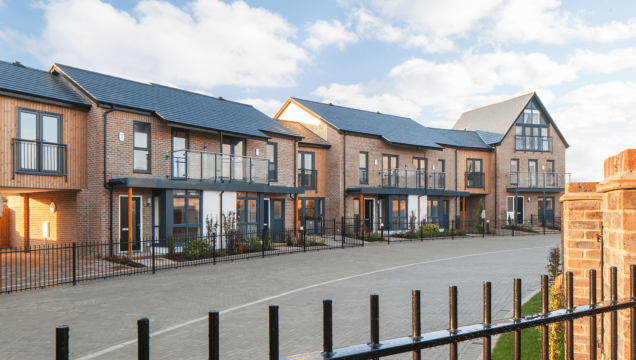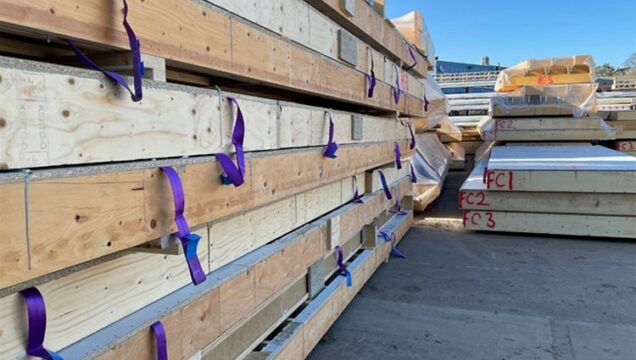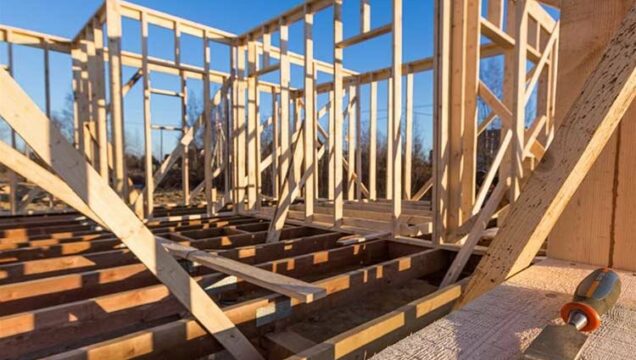

Net-zero means carbon neutral by 2050. Managing our carbon usage in the next ten years will be critical in shaping our future world.
In our industry, timber as a primary construction material will be crucial to decarbonising the structural fabric of new homes. Its wider use as a first-choice material is necessary to fulfil our climate change responsibilities.
//Reducing carbon cost
When we build a house, the finished structure has a three-fold ‘carbon cost’.
- ‘Embodied carbon’ cost: The calculated amount of CO2 required to build the structure. This cost considers the materials used, energy consumed, transportation of materials, assembly, and disposal.
- ‘Carbon capture’ cost: The amount of carbon absorbed by materials used in its construction.
- ‘Operational carbon’ or ‘lifetime’ cost: The running costs of the structure, heating, cooling, powering, and water supply.
Using timber as a primary construction material reduces the embodied and operational carbon impact of a property.
//Timber and embodied carbon
Traditional building materials like brick, steel, and cement are carbon-intensive. Significant levels of CO2 are required to manufacture, transport, use, and dispose of them. Timber’s carbon cost is far lower, which helps lower a building’s overall carbon footprint.
According to the Environmental Audit Committee, using timber frames in construction is one of the most effective ways of mitigating climate change using minimal resources.
//Timber and carbon capture
Trees absorb and store carbon dioxide (CO2 ) as part of photosynthesis. When a tree is cut down and turned into timber, it holds the CO2 it absorbed in its lifetime.
Incredibly, one cubic metre of timber contains approximately a tonne of CO2 .
By increasing the use of timber frames from 50,000 homes per year to 270,000 homes per year, we could increase the amount of carbon stored in UK homes instead of the atmosphere by three Megatonnes (Mt) every year.
//Timber and operational carbon
Timber is a renewable energy source, and its waste is easily reduced, reused and recycled. For example, at Pinewood Structures, waste wood is used to heat our factory.
Timber is sourced from sustainably managed forests, and for every tree felled, others are planted. Young trees consume more CO2 than older trees.
Green infrastructures complement the built environment. They create habitats, cool urban areas, prevent flooding and improve people’s health and well-being.
//Timber has a high pre-manufactured value (PMV)
Timber frames require significantly less energy to construct than traditional methods of construction.
They’re also built off-site in a controlled environment, which reduces their carbon cost. Both these factors mean that timber-framed structures have a high PMV or put another way, more added value in the factory, percentage.
Homes England Affordable Homes Programme incentivises higher PMV percentages in new developments to ensure that the construction industry continues to meet its sustainability targets, and achieve net-zero by 2050.
The future of sustainable construction is using timber to reduce the whole-life carbon impact of new buildings.
//Want to learn more?
Enquire today to discuss your timber frame requirements. We’ll ensure you make an informed decision and get precisely the timber frame solution your project needs.


